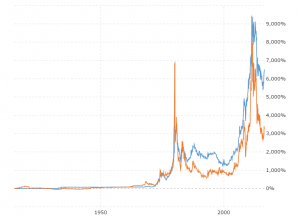War in the Pacific National Park Quarter Released
Five times a year we get the pleasure of welcoming a new quarter in the ‘America the Beautiful’ series, that has been running since 2010, and still has a couple of years to go. 2019 is also the 75th anniversary of the end of World War II, and it worked out weel that the 48th National Park – scheduled for release this year – turned out to be the War in the Pacific National Historical Park on the island of Guam. The sequence of releases is based on the year the parks were inaugurated, and this park was officially established on August 18, 1978. The park is over 2,000 acres, preserved from development to commemorate the “bravery, courage, and sacrifice of those participating in the campaigns of the Pacific Theater of World War II.“
The Island of Guam is the largest of the 15 islands of the Marianas archipelago, which form a crescent in the north-west Pacific, south of Japan and east of the Philippines. Spain colonized them in 1667, but in 1898 the USA took Guam from Spain, following the Spanish-American War. The remaining islands were sold by Spain to Germany, and following World War I they became Japanese territory. On December 21, 1941, three days after Pearl Harbor, Japan captured Guam, overcoming the small garrison of American servicemen who attempted to defend it. Japan then proceeded to fortify it, adding it to the existing fortifications of the rest of the Marianas.
The Marianas Islands were a strong potential foothold in the War of the Pacific, as bases there would allow bombers to reach Japan itself. Operation Forager, to recapture the islands, began in June 1944, with heavy aerial bombing and shelling of the islands, with the intention of then landing on them. Strong Japanese resistance slowed the progress of the military, but on July 21 he U.S. Marines, and soldiers of the 77th Infantry Division landed on the island of Guam and slowly took control after fierce fighting. An important point in the battle was the landing on Asan Bay, which is within the National Park. The quarter reverse shows soldiers leaving their landing craft and wading onto the beaches of Asan Bay, clutching their rifles.
The War in the Pacific National Historical Park covers Aspra Harbour as well as Asan Bay, and several other sites of historic importance. Unlike most other National Parks, nature takes second place to the historic elements of the park, which includes former battlefields, gun emplacements, trenches, caves, and historic structures. There is an overlook point above Asan Bay, with a memorial wall listing the names of the 1,880 servicemen who died in 1941 and in 1944. As well, the names of 1,170 Guam people who died and 14,721 who suffered atrocities of war from 1941-1944, are listed.
The reverse was designed by Joel Iskowitz, and it was sculpted by Michael Gaudioso, a sculptor-engraver with the US Mint. Iskowitz is a designer and book illustrator, as well as specializing in stamp, coin and medal design. He has created several coin designs for the US Mint. As well as Iskowitz’s design, the reverse is inscribed with the words, WAR IN THE PACIFIC, GUAM, 2019, and E PLURIBUS UNUM. The obverse is the standard design used for all quarters since 1932, a portrait of George Washington, designed by artist John Flanagan and has appeared on U.S. quarters since 1932.








